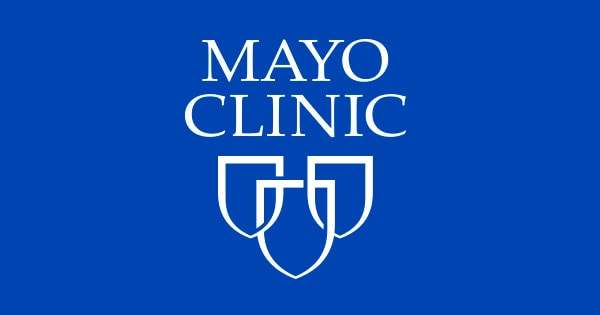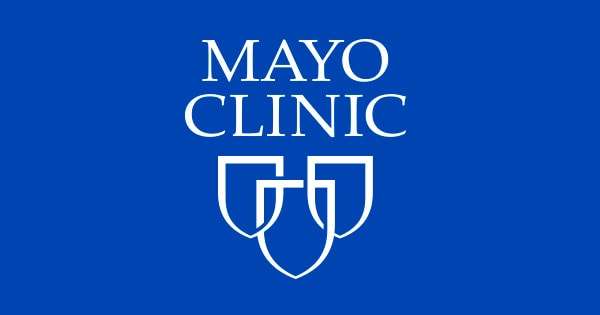Aerobic exercise: How to warm up and cool down
Done correctly, warming up and cooling down may offer help in reducing your risk of injury and improving your athletic performance.
By Mayo Clinic Staff
Before you jump on the elliptical machine or hit the running trails, consider doing a brief warmup first. And think about following your workout with a quick cool-down session. Sure, a warmup and cool-down may add a few minutes to your exercise routine, but they might also reduce stress on your heart and other muscles.
Why warm up and cool down
Warmups and cool-downs generally involve doing your activity at a slower pace and reduced intensity.
Warming up helps prepare your body for aerobic activity. A warmup gradually revs up your cardiovascular system by raising your body temperature and increasing blood flow to your muscles. Warming up may also help reduce muscle soreness and lessen your risk of injury.
Cooling down after your workout allows for a gradual recovery of preexercise heart rate and blood pressure. Cooling down may be most important for competitive endurance athletes, such as marathoners, because it helps regulate blood flow. Cooling down doesn’t appear to help reduce muscle stiffness and soreness after exercise, but more research is needed.
Although there’s controversy about whether warming up and cooling down can prevent injuries, proper warmups and cool-downs pose little risk. Plus, they seem to give your heart and blood vessels a chance to ease into — and out of — an exercise session. So if you have the time, consider including a warmup and cool-down in your workout routine.
How to warm up
Warm up right before you plan to start your workout. In general, warm up by focusing first on large muscle groups, such as your hamstrings. Then you can do exercises more specific to your sport or activity, if necessary.
Begin by doing the activity and movement patterns of your chosen exercise, but at a low, slow pace that gradually increases in speed and intensity. This is called a dynamic warmup. A warmup may produce mild sweating, but generally won’t leave you fatigued.
Here are some examples of warm-up activities:
- To warm up for a brisk walk, walk slowly for five to 10 minutes.
- To warm up for a run, walk briskly for five to 10 minutes.
- To warm up for swimming, swim slowly at first and then pick up the tempo as you’re able.
How to cool down
Cooling down is similar to warming up. You generally continue your workout session for five minutes or so, but at a slower pace and reduced intensity.
Here are some examples of cool-down activities:
- To cool down after a brisk walk, walk slowly for five to 10 minutes.
- To cool down after a run, walk briskly for five to 10 minutes.
- To cool down after swimming, swim laps leisurely for five to 10 minutes.
A word about stretching
If stretching exercises are part of your workout routine, it’s best to do them after the warm-up or cool-down phase, when your muscles are already warm.
Stretching can improve flexibility and range of motion about a joint. Stretching may also help improve your performance in some activities by allowing your joints to move through their full range of motion. However, studies haven’t consistently shown that stretching helps prevent muscle soreness or injury.
Be kind to your body
Finding time for regular aerobic workouts — plus warming up and cooling down — can be challenging. But with a little creativity, you can probably fit it in. For example, walking to and from the gym can be your warmup and cool-down.
There is a problem with information submitted for this request. Review/update the information highlighted below and resubmit the form.
From Mayo Clinic to your inbox
Sign up for free, and stay up to date on research advancements, health tips and current health topics, like COVID-19, plus expertise on managing health.
ErrorEmail field is required
ErrorInclude a valid email address
To provide you with the most relevant and helpful information, and understand which information is beneficial, we may combine your email and website usage information with other information we have about you. If you are a Mayo Clinic patient, this could include protected health information. If we combine this information with your protected health information, we will treat all of that information as protected health information and will only use or disclose that information as set forth in our notice of privacy practices. You may opt-out of email communications at any time by clicking on the unsubscribe link in the e-mail.
Thank you for subscribing!
You’ll soon start receiving the latest Mayo Clinic health information you requested in your inbox.
Sorry something went wrong with your subscription
Please, try again in a couple of minutes
- Warm up, cool down. American Heart Association. https://www.heart.org/en/healthy-living/fitness/fitness-basics/warm-up-cool-down. Accessed May 6, 2019.
- Physical Activity Guidelines for Americans. 2nd ed. U.S. Department of Health and Human Services. https://health.gov/paguidelines/second-edition. Accessed May 6, 2019.
- AskMayoExpert. Physical activity (adult). Rochester, Minn.: Mayo Foundation for Medical Education and Research; 2019.
- Van Horren B, et al. Do we need a cool-down after exercise? A narrative review of the psychophysiological effects and the effects on performance, injuries and the long-term adaptive response. Sports Medicine. 2018;48:1575.
- Popp K, et al. Pre- and post-activity stretching practices of collegiate athletic trainers in the United States. Journal of Strength & Conditioning Research. 2017;31:2347.
See more In-depth

“Warming up and cooling down are good for your exercise performance — you’ll do better, faster, stronger — and for your heart since the increased work on the heart ‘steps up’ with exercise,” said Richard Stein, M.D., professor of cardiology in the Department of Medicine at New York University and co-director of Cardiology Consult Services.
“Stretching also makes many people feel better during and after exercise and in some people decreases muscle pain and stiffness.” When done properly, stretching activities increase flexibility.
So what’s the big deal?
A good warm-up before a workout dilates your blood vessels, ensuring that your muscles are well supplied with oxygen. It also raises your muscles’ temperature for optimal flexibility and efficiency. By slowly raising your heart rate, the warm-up also helps minimize stress on your heart.
“Warming up before any workout or sport is critical for preventing injury and prepping your body,” said Johnny Lee, M.D., director of the Asian Heart Initiative at the New York University Langone Medical Center and president of New York Heart Associates in New York City.
“Stretching allows for greater range of motion and eases the stress on the joints and tendons, which could potentially prevent injury. Warming up, such as low-heart rate cardio, prepares the circulatory and respiratory system for the upcoming ‘age- and type-appropriate target heart rate’ exercising, whether it’s endurance or sprint type of activities.”
The cool-down is just as critical. It keeps the blood flowing throughout the body. Stopping suddenly can cause light-headedness because your heart rate and blood pressure drop rapidly.
Warm up
Before you exercise, think about warming up your muscles like you would warm up your car. It increases the temperature and flexibility of your muscles, and helps you be more efficient and safer during your workout. A warm-up before moderate- or vigorous-intensity aerobic activity allows a gradual increase in heart rate and breathing at the start of the activity.
Tips:
- Warm up for 5 to 10 minutes. The more intense the activity, the longer the warm-up.
- Do whatever activity you plan on doing (running, walking, cycling, etc.) at a slower pace (jog, walk slowly).
- Use your entire body. For many people, walking on a treadmill and doing some modified bent-knee push-ups will suffice.
Cool down
Cooling down after a workout is as important as warming up. After physical activity, your heart is still beating faster than normal, your body temperature is higher and your blood vessels are dilated. This means if you stop too fast, you could pass out or feel sick. A cool-down after physical activity allows a gradual decrease at the end of the episode.
It’s good to stretch when you’re cooling down because your limbs, muscles and joints are still warm. Stretching can help reduce the buildup of lactic acid, which can lead to muscles cramping and stiffness.
Tips:
- Walk for about 5 minutes, or until your heart rate gets below 120 beats per minute.
- Stretching:
- Hold each stretch 10 to 30 seconds. If you feel you need more, stretch the other side and return for another set of stretching.
- The stretch should be strong, but not painful.
- Do not bounce.
- Breathe while you’re stretching. Exhale as you stretch, inhale while holding the stretch.
So do your body a favor. Take time to gradually progress into your workout and cool down when you’re done being physically active.
Just as important as it is to warm up before any workout, cooling down is also essential. Some people may think that overlooking cooling down can cause no harm. In fact cooling down is an essential part of the workout. A cool down doesn’t take too long, barely a 3-10 minutes of stretching and gentle variations of the movements you would usually do during the workout. So next time, instead of rushing after you are done exercising, remind yourself of a good cool down for these 5 reasons.
1. Regulating your heart rate. Exercising in general causes your heart rate to increase and after exercising, your heart beats faster than the normal and you need to bring it to its normal rate. Stopping suddenly and quickly without slowing down gradually can cause dizziness, light-headedness. So, for instance, if you are running, the best way to slow your heart rate down is by walking.
2. Reducing the build-up of lactic acid. After intense workouts, lactic acid builds up in our bodies which can lead to muscle cramping and stiffness. Cooling down helps speeding up the process of releasing the lactic acids in our body and accordingly, your body recovers more quickly.
3. Preventing injuries Like warming up, cooling down after exercises help prevent injuries such as muscle tears. Skipping cooling down and stretching after a workout not only slows down muscle recovery, but also reduces the benefits gained from a workout.
4. Body restoration. Our bodies undergo several changes during working out such the adrenaline pumping, increased temperature, and accelerated breathing. Cooling down after a workout helps restoring the body to its normal condition.
5. Stress relief and relaxation. Exercising is as good for the mind as it is for the body. As your body begins to slow down, you begin to get into a relaxation mood and the brain begins to release dopamine and serotonin, the two hormones that are responsible to makes us feel good and less stressed.




